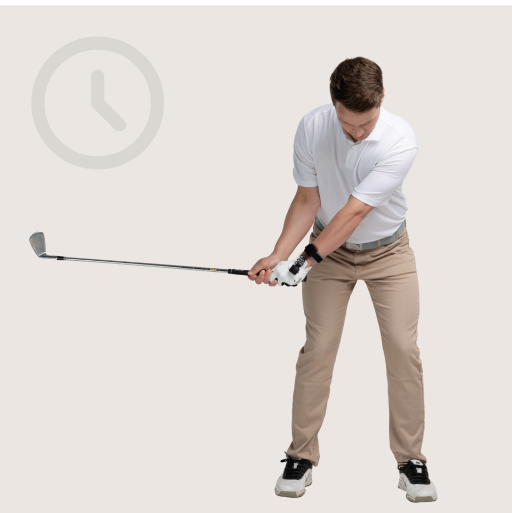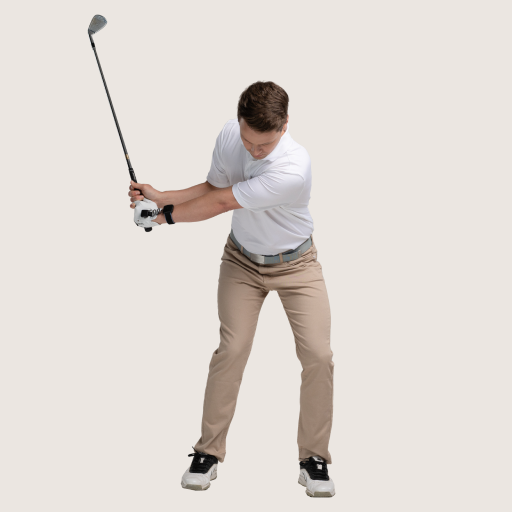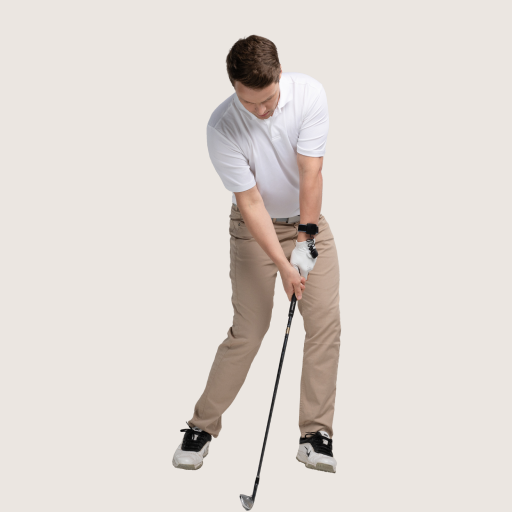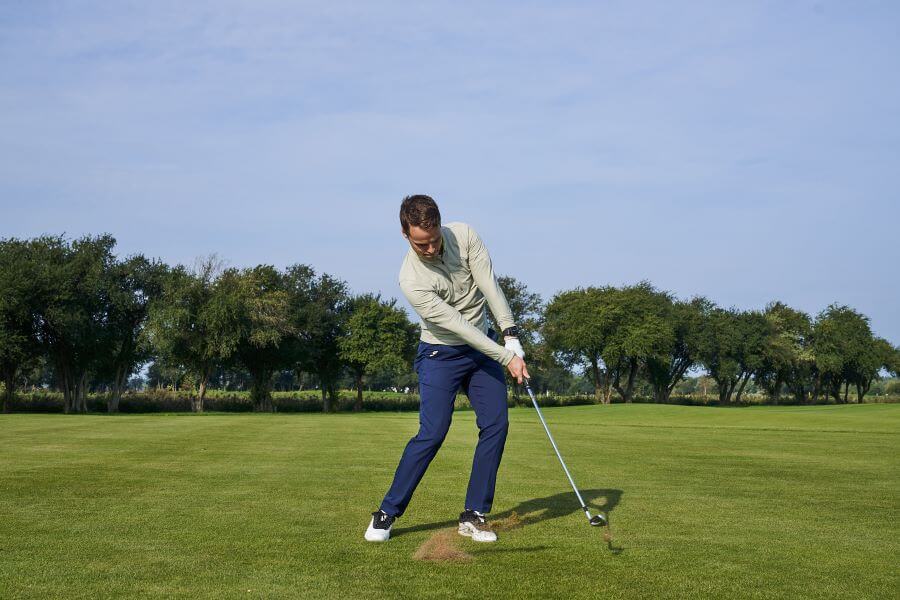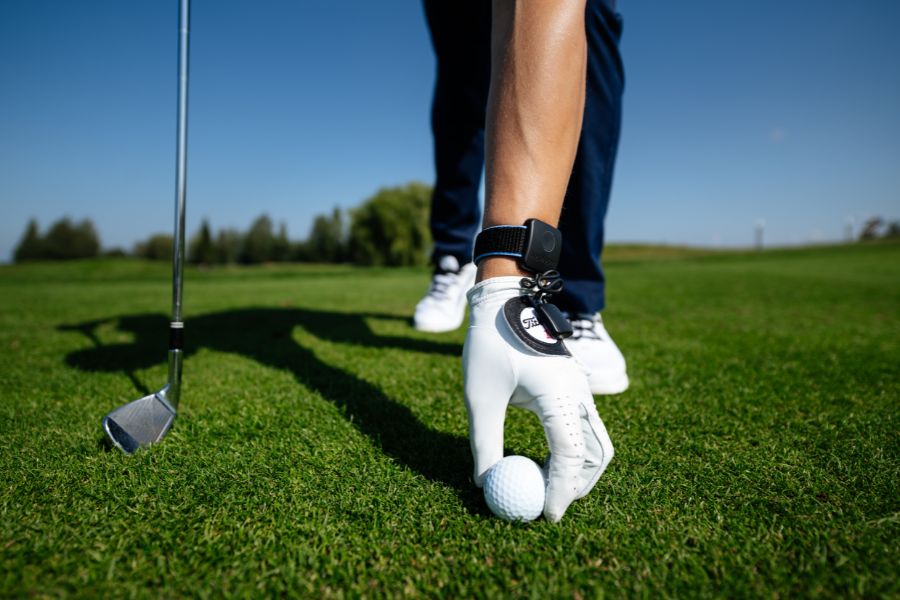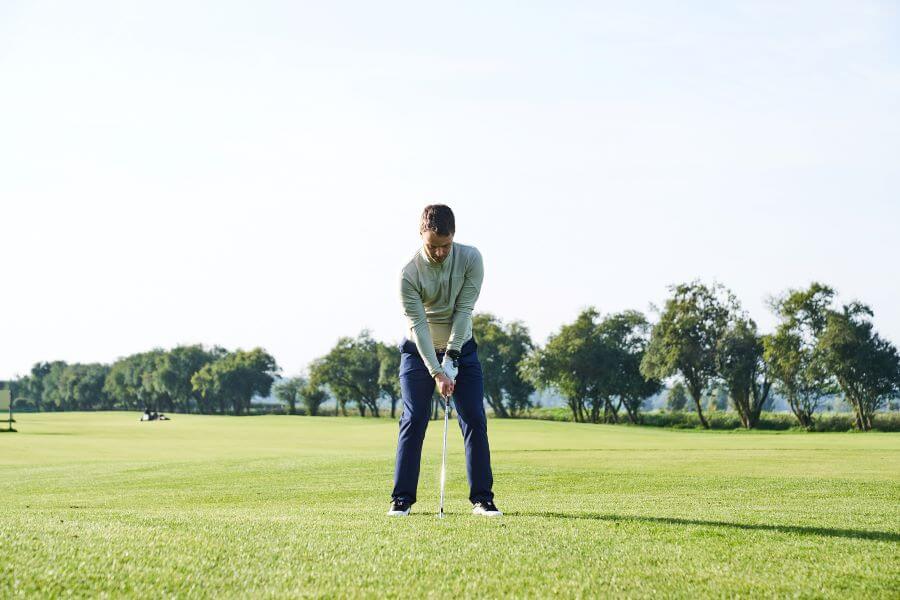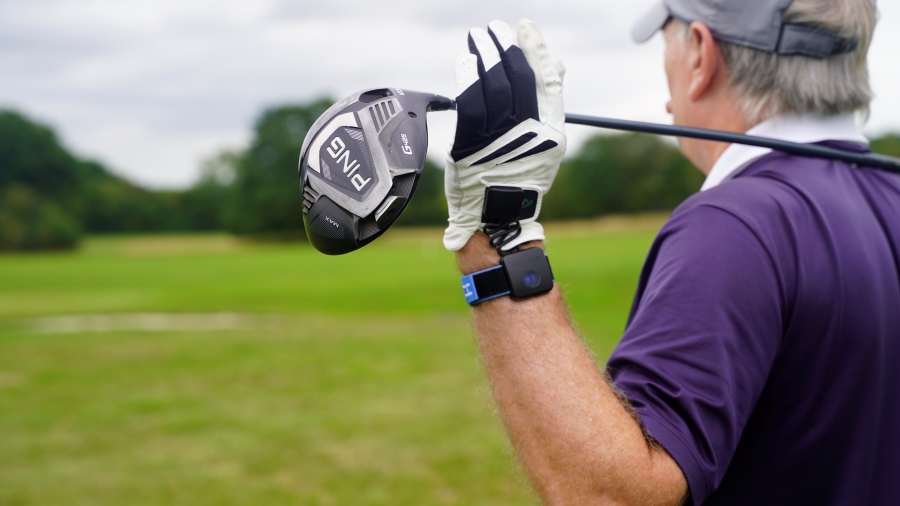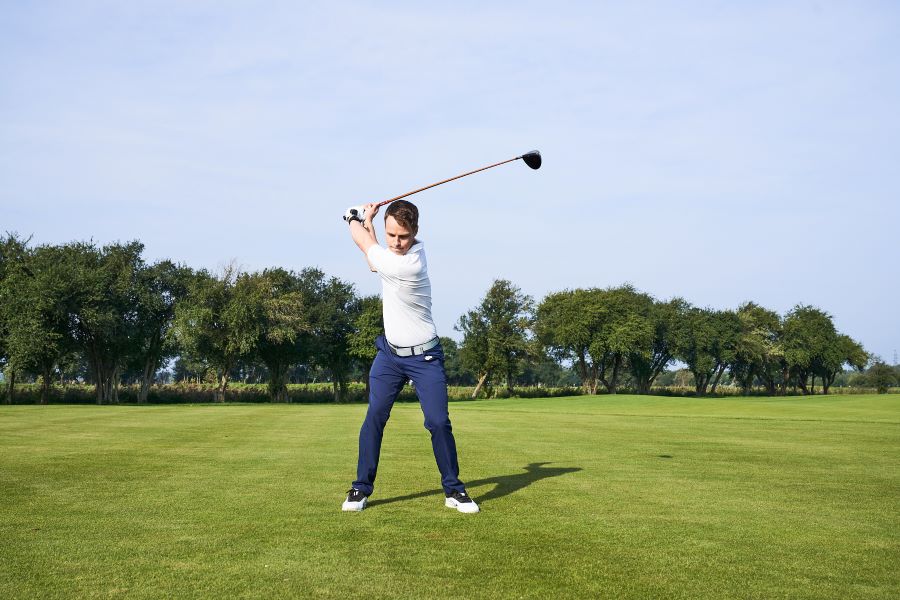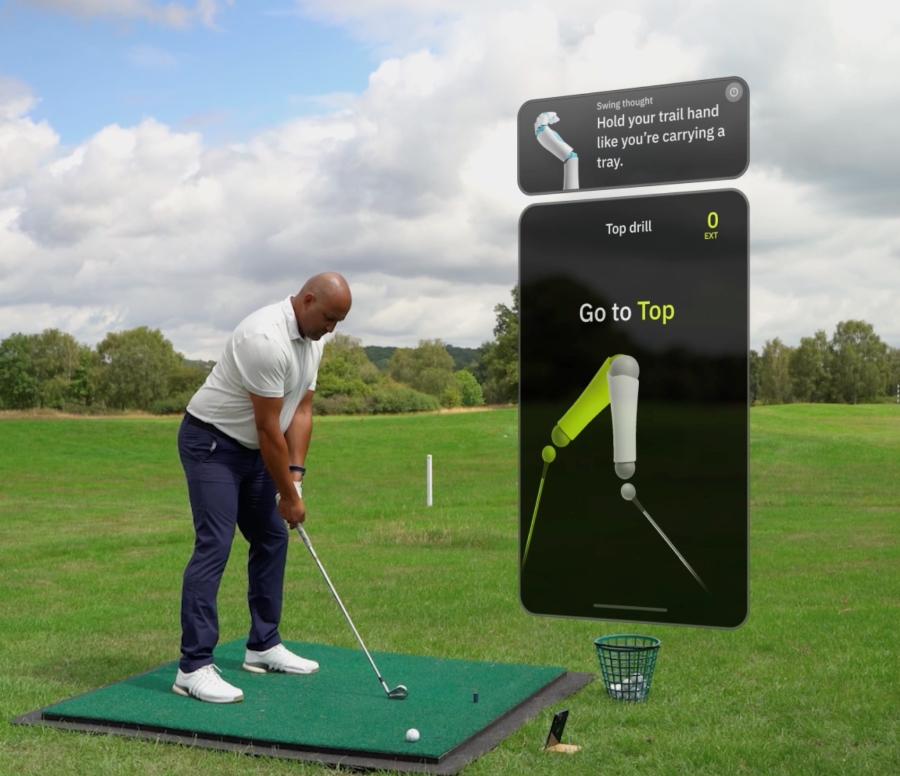Fade vs Draw in Golf: Key Differences, When to Use Each, and How to Hit Them
If you could pick one shot to play consistently – fade vs draw – which would it be?
Most amateurs would likely choose a draw, but it’s important to understand the value of being able to shape both shots.
This article explains when to use a draw or fade, how they differ in shape, and what’s required to hit each one. It covers the key differences in alignment, ball position, clubface angle, wrist action, and swing path so you can develop control over both shot shapes.
Fade vs Draw in Golf (Key Takeaways)
The difference between a fade and a draw may only be a few yards, but you won’t have much success pulling off the shots you want to hit without the right adjustments in your game.
Here are the major fade vs draw takeaways that you need to understand before hitting a shot.
- A fade shot requires a slightly steeper path with a more open clubface; changes from square to open are subtle when hitting a fade, or the end result will be a slice.
- A draw shot requires a slightly more shallow path and a slightly closed clubface.
- Make slight adjustments to your setup and stance to get the fade vs draw ball flight in your golf swing.
- Your wrists help to control the clubface; if your wrist are in the correct position, you will have a much easier time controlling your ball flight.
- A pre-shot routine should help you ensure you have the right setup and mindset to pull off the fade or draw shot.
Contents
Overview of a Fade versus Draw
A fade and a draw are two intentional shot shapes that help golfers manage the course more effectively, avoiding hazards, shaping around trees, or improving positioning for approach shots.
- Fade: Starts left of the target and curves gently back to the right. Useful for playing away from trouble or hitting into left-to-right winds.
- Draw: Starts right of the target and curves softly to the left. Great for cutting corners on doglegs or creating more rollout on tee shots.
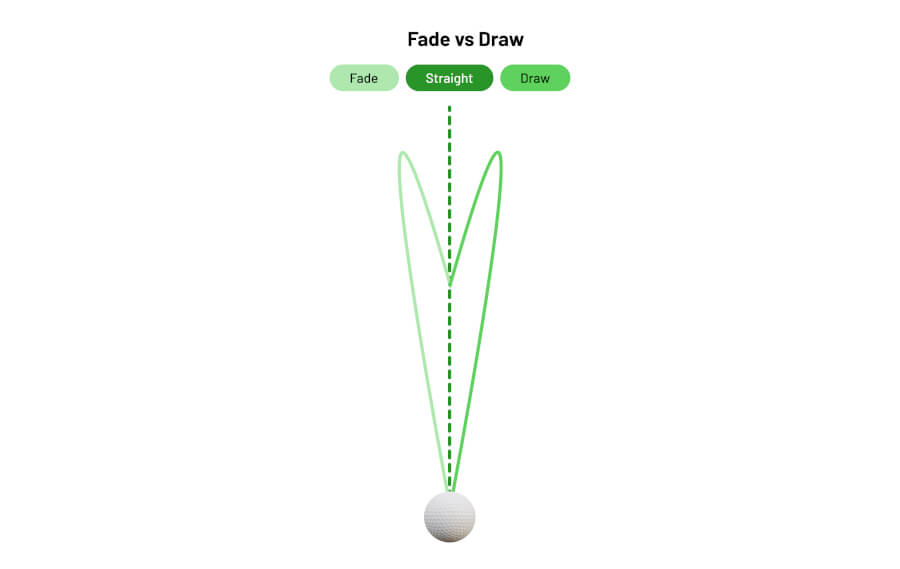
What is a Fade in Golf?
A fade curves gently from left to right for right-handed golfers. It’s especially useful on holes that bend to the right, helping you cut the corner and shorten the hole.
Many golfers prefer a fade because it can feel more consistent and easier to control.
| Pros | Cons |
|---|---|
| Ideal for holes that dogleg right | Tough to use on holes that dogleg left |
| Helps curve around trees or hazards on the right side | May bring left-side trouble into play |
| Works well in a left-to-right wind | Can launch higher, making it harder to control in strong winds |
| Offers more control for many players | Higher flight may lead to loss of distance in windy conditions |
When Should You Play a Fade?
A fade suits shots where you wish to take the right side of the hole out of play, or you have a tree directly in your line.
In addition, you can shorten the length of a hole by playing a fade on a right-shaping dogleg. By using the curve you can cut the corner and leave yourself a short approach shot.
How do You Play a Fade?
1. Open Your Stance
When setting up for a fade, ensure your body is open to the intended target. If you’re right handed like I am, that sees your feet and shoulders pointing to the left of your desired landing zone.
Opening your stance accounts for the curve on the ball and promotes an inwards club path through impact. This combination sees your ball start to the left and curve right to the target.
2. Cup Your Wrists
The ultimate goal with a fade is to get your clubface open to the swing path at impact. You need to cup your wrists on the downswing, which will steep your swing and open your clubface leading into contact.
A steeper swing causes your club to follow an inside path through contact, with the clubface open to the line. The combination starts your ball left of the target and fades right towards the intended target.
Using the HackMotion wrist sensor, gauge how much extension you create throughout the swing. When I hit a fade, I tend to over-extend my wrists prior to impact, before extending them through impact.
You can use the sensor to develop greater clubface control leading into impact, ensuring you deliver the correct path and clubface angle for a fade.
3. Swing Inside
The next step is to induce an inside swing path through impact, which will cause your golf ball to start left of the target. If you swing on an outside path with your face open to the target, your ball will start and finish right of your intended line.
Padraig Harrington exhibits a prime example of the ideal swing path for a fade. He doesn’t overdo it; he only swings 1 to 2 degrees inside, making it barely noticeable to the naked eye, but the outcome is a 7 to 8-yard fade.
4. Open the Clubface to the Path
The last step to play a fade is to get your clubface open to your path at impact. When your clubface is open to an inside path at impact, it should align with your intended target, be it the fairway or flagstick.
As your club swings inside through contact, the open clubface helps you generate the curve required to shape your ball from left to right.
What is a Draw in Golf?
A draw is a controlled shot that curves from right to left for right-handed golfers. It’s especially useful on holes that bend to the left, helping you cut the corner and reduce the distance.
A draw can also be helpful when a straight shot or fade isn’t possible, like when a tree blocks the left side and you need to curve the ball around it.
| Pros | Cons |
|---|---|
| Perfect for holes that dogleg left | Not ideal for holes that dogleg right |
| Creates a lower, more controlled ball flight | Can bring right-side hazards into play |
| Useful in windy conditions to reduce launch and stay under the wind | Harder to execute consistently for many amateur golfers |
When Should You Play a Draw?
You should consider inducing a draw when you’re playing a hole that doglegs to the left, or when a tree is in your line. A Draw still gives you a shot at escaping trouble and getting the ball onto the green.
In my experience, a draw also proved helpful in gale force winds, because striking the ball with a delofted clubface prompted a lower launch and flight.
How do You Play a Draw?
1. Close Your Stance
The first step in generating a draw shot is to close your stance relative to your intended landing zone. A closed stance means your feet and shoulders are pointing to the right of your target for right handers, and left for lefties.
You do this to account for the right to left curve on your ball, leaving room for it to draw back to your target. If you aim parallel to your target and induce a draw, the ball will curve left away from the mark.
2. Position Ball Back in Your Stance
Next, position the ball back of center in your stance. Adjusting this simple thing help send the club on an outwards path, striking the ball with a closed and delofted clubface.
3. Bow Your Wrist
Bowing or flexing your wrist prior to impact is often overlooked in a draw, but it is essential to your plane, angle of attack, and club path. Inducing wrist flexion before reaching the strike zone enables you to shallow the shaft and close the clubface, relative to your path.
The shallow angle of attack gets you into a position to swing outwards through impact, while keeping the clubface closed to the path.
4. Swing Outside
Opposite to a fade, where you swing on an inside line, a draw demands an outside path through impact. Sending your club face outwards causes you to launch the ball to the right of the intended target, leaving space for it to curve left back towards your target.
Additionally, swinging outside helps you keep your clubface close to your club path through impact. Although closed to your swing path, your clubface should sit squarely in line with your intended target, be it the fairway or the flagstick.
5. Clubface Square to the Target Line
The final step in inducing a draw is to keep your clubface square to the target line at impact. If you’re aiming for the flagstick, keep your clubface square to the flagstick.
Many suggest you close your clubface for a draw, but the clubface remains neutral; it is only your path and alignment that change.
Combining a square clubface with a closed stance causes the clubface to sit marginally closed to your swing path at impact. When you add in an outwards swing path, your square to the target face now becomes closed to the path, enabling you to induce a right-to-left curve on the ball for an optimal draw.
Difference between Fade and Draw in Golf
There are a few key differences between the fade and draw in golf. Make sure you have these down to hit the shot you want.
| Category | Fade | Draw |
|---|---|---|
| Grip | Slightly weaker grip helps keep clubface open | Slightly stronger grip helps square or close the clubface |
| Stance | Open stance (aim left of target) | Closed stance (aim right of target) |
| Swing Path | More outside-to-in path | More inside-to-out path |
| Wrist Angle | Lead wrist has more extension (cupped) at impact | Lead wrist has more flexion (bowed) at impact |
| HackMotion Tip | Helps track wrist angles to avoid over extension at the top and again at impact. | Use to monitor wrist flex at impact for a controlled draw |
Drills to Work on Hitting Draws and Fades
Learning to hit a draw and a fade is easier sometimes if you have drills to work on. Here are a few to help you groove the feeling of each shot:
Learning to shape shots on command takes more than just theory—you need to feel the wrist positions and setup changes that produce a draw or fade. These drills will help build that awareness.
Draw vs Fade Wrist Control Drill
Use this drill to feel how different wrist angles change the shape of your shot.
To Hit a Fade:
- Move the ball slightly forward in your stance.
- Set the handle lower and back to reduce shaft lean.
- Feel more extension (cupping) in your lead wrist through the downswing.
- Swing out-to-in while keeping the face slightly open to the path.
- Focus on the feeling of the clubface staying open through impact.
To Hit a Draw:
- Move the ball slightly back in your stance.
- Set the handle forward and up (increased shaft lean).
- Feel more flexion (bowing) in your lead wrist through impact.
- Swing in-to-out with the face slightly closed to the path.
- Visualize the clubface turning over as you swing through.
Exaggeration Drill: Build Feel for Shot Shapes
When learning a shot shape that doesn’t come naturally, you need to exaggerate wrist movement to override your defaults.
When you stand back up to the golf ball again, you won’t have to exaggerate as much, but the feeling will be there.
Exaggeration Drill: Build Feel for Shot Shapes
- Choose a target where you can safely curve the ball more than normal.
- For a fade, overdo lead wrist extension—feel like the clubface is wide open through impact.
- For a draw, overdo lead wrist flexion—feel like you’re shutting the face hard through impact.
- Use HackMotion live mode to see your real-time wrist data and exaggerate accordingly.
- Repeat several reps in each direction to create contrast and train your feel.
HackMotion Top Drill
Build consistency in your wrist position at the top of the backswing—even at full speed.
This drill is an option in the HackMotion app. You can work on it in real time and check your positions.
Combined Top Drill in HackMotion
Train your top position by mastering optimal wrist angles. Challenge yourself to reach the ideal wrist position during a full-speed backswing.
HackMotion Combined Top Drill – Step by Step
- Full-Speed Backswing: Set up with HackMotion on and take a fast, real-swing backswing with no pause.
- Check Wrist Angles: Stop at the top and immediately check whether your wrist position hits the HackMotion green zone.
- Transition & Swing Through: From that paused top position, continue your downswing naturally. The goal is to blend the correct top position into your full swing.
- Refine: Start with a slight pause at the top, then gradually work toward performing the move without any pause.
FAQ
Is a fade easier to hit than a draw?
Yes, a fade is easier to hit than a draw, because amateurs often produce excess wrist extension in the lead wrist on the downswing and leave the clubface open.
Additionally, the average golfer struggles to flex their wrists through impact and close the clubface relative to the swing path, which is necessary to induce a draw.
Does hitting a fade or draw cost distance?
No, hitting a fade or draw does not cost distance in normal conditions. I have hit some of my longest drives employing a power fade.
However, the reduced spin and low launch of a draw do deliver increased yardage in windy conditions.
Draw or fade vs straight shots?
A draw or fade improves your ability to take water, trees, and bunkers out of play by curving it around them. This suits mid- and low-handicappers seeking greater control on approach.
High handicappers should focus on straight shots for now to work on accuracy before attempting to shape shots.
Do more pros hit a fade or draw?
Most pros hit a fade and draw depending on where their ball is positioned and the line to the target. Although pros may favor one shot over the other, the majority have the skill to produce both shapes.
The ability to hit both shots enables them to attack the green from most positions on the golf course and cut the corner on doglegs.
How to stop an accidental draw or fade?
You stop an accidental draw by cupping your wrists on the downswing and opening the clubface slightly to avoid generating a right-to-left curve.
Conversely, you prevent a fade by bowing your wrists before impact, which marginally closes and delofts the clubface, promoting a straighter flight.
Should amateurs play both shots?
Yes, amateurs should play both shots as it increases your shot selection repertoire and enables you to position yourself optimally from tee to green.
Final Thoughts
Our review of fade vs. draw highlights the importance of knowing how to play each shot and when to do so. Although there is a common misconception that a draw is a better shape, it doesn’t aid you on right doglegs or when trees block your path to the right.
Ultimately, you should learn to play both of these shots. The key to executing a fade and draw is your club path and clubface angle. Your wrists dictate 80% of your ball flight direction and are key to a successful draw or fade.
Explore the HackMotion golf training aid to help you control your wrist angles to close or open the clubface at contact.



